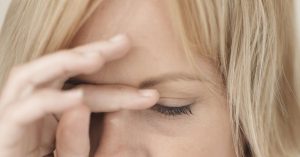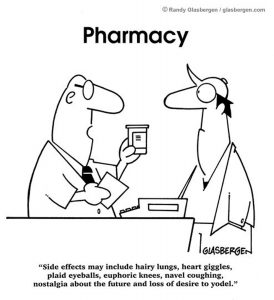When Are Antibiotics Appropriate and When Should I Avoid Using Them?
 People are becoming increasingly aware of the dangers that can result from the overuse of antibiotics. When antibiotics were first discovered in the early 20th century, researchers believed that they had found the key to conquering many deadly diseases. Since that time, antibiotics have certainly helped to cure diseases that once wiped out large parts of the population. However, there is growing evidence that antibiotics are now being used too frequently, and that they are often being used in inappropriate circumstances. This has led to many previously curable diseases becoming antibiotic-resistant, which means that a cure now requires the use far stronger antibiotics. In fact, some diseases have now become resistant to nearly all antibiotics. It is obvious that if antibiotic use continues in this way, we may have a major health crisis on our hands.
People are becoming increasingly aware of the dangers that can result from the overuse of antibiotics. When antibiotics were first discovered in the early 20th century, researchers believed that they had found the key to conquering many deadly diseases. Since that time, antibiotics have certainly helped to cure diseases that once wiped out large parts of the population. However, there is growing evidence that antibiotics are now being used too frequently, and that they are often being used in inappropriate circumstances. This has led to many previously curable diseases becoming antibiotic-resistant, which means that a cure now requires the use far stronger antibiotics. In fact, some diseases have now become resistant to nearly all antibiotics. It is obvious that if antibiotic use continues in this way, we may have a major health crisis on our hands.
The first thing to be aware of is that antibiotics are not effective in the treatment of viruses. They only treat bacterial infections, certain fungal infections and parasites. For diseases such as the common cold, flu or bronchitis, antibiotics are completely ineffective and their use in cases such as these will only contribute to the development of antibiotic-resistant bacteria. You should not ask your doctor to prescribe antibiotics if you have a sore throat or the stomach flu, for instance. According to the Centers for Disease Control and Prevention (CDC), antibiotics were prescribed for an acute respiratory infection in 68% of visits to the doctor. However, 80% of those prescriptions were unnecessary.
Antibiotics are often an appropriate treatment for conditions such as severe sinus infections that last longer than two weeks, ear infections, bladder infections and skin infections. These are frequently due to a bacterial or fungal infection, and treating them with antibiotics is effective.
If you have been prescribed an antibiotic, it is very important that you take it exactly as directed by your physician. If your symptoms happen to clear up before the entire course of antibiotics is completed, you must still continue to take them as prescribed. This is because there may still be a few lingering bacteria in your system, and—if they are not all killed—the strongest ones may survive to produce new generations of ever stronger bacteria that might make current antibiotics less effective.
Some doctors feel pressured by their patients to prescribe something, whether it’s really going to be helpful or not. A study published in the journal Pediatrics found that pediatricians will prescribe antibiotics for children 62% of the time if parents expect them to, and only 7% of the time if the parents do not expect an antibiotic prescription. Do not put pressure on your doctor to prescribe antibiotics for your condition. He or she is the best judge as to whether antibiotics are appropriate.
Also, keeping adjusted helps keep your immune system at its best. To avoid catching colds and other viruses, be sure to keep you and your family adjusted! Call our office at 406-652-3553 if you need to schedule an appointment with Dr. Oblander!
 With headaches being one of the most common nervous system disorders worldwide, affecting almost 50 percent of the population at least once annually, finding a way to relieve them is important to when it comes to improving quality of life for a large number of people. Certainly there are several different types of headaches–migraines, cluster headaches, and medication-overuse headaches, for instance–and each one requires a unique approach for treatment.
With headaches being one of the most common nervous system disorders worldwide, affecting almost 50 percent of the population at least once annually, finding a way to relieve them is important to when it comes to improving quality of life for a large number of people. Certainly there are several different types of headaches–migraines, cluster headaches, and medication-overuse headaches, for instance–and each one requires a unique approach for treatment. There is no medical definition for a “superfood”. Food manufacturers are eager to use the word to promote sales of their products that contain traces of supposed superfoods such as blueberries, pomegranates and chocolate. The Oxford English Dictionary defines a superfood as “a nutrient-rich food considered to be especially beneficial for health and well-being.” However, there are no set criteria about what makes a food nutrient-rich. Most superfoods are high in antioxidants and phytonutrients relative to other foods. However, if you were to eat only one of these superfoods to the exclusion of all else, you would be seriously deficient in many of the nutrients your body needs in order to stay healthy. So what exactly is the science behind the idea of superfoods?
There is no medical definition for a “superfood”. Food manufacturers are eager to use the word to promote sales of their products that contain traces of supposed superfoods such as blueberries, pomegranates and chocolate. The Oxford English Dictionary defines a superfood as “a nutrient-rich food considered to be especially beneficial for health and well-being.” However, there are no set criteria about what makes a food nutrient-rich. Most superfoods are high in antioxidants and phytonutrients relative to other foods. However, if you were to eat only one of these superfoods to the exclusion of all else, you would be seriously deficient in many of the nutrients your body needs in order to stay healthy. So what exactly is the science behind the idea of superfoods? Sciatica pain is often so debilitating that it forces people to miss work and other normal activities. Of all patients with low-back pain, sciatica patients have the highest level of disability (1). In fact, patients with sciatica are disabled for an average of 72 days according to Norwegian public-health records.
Sciatica pain is often so debilitating that it forces people to miss work and other normal activities. Of all patients with low-back pain, sciatica patients have the highest level of disability (1). In fact, patients with sciatica are disabled for an average of 72 days according to Norwegian public-health records.
 Back pain is an expensive health problem for both patients and businesses.
Back pain is an expensive health problem for both patients and businesses.  We recently posted about standing desks. For those of you who are looking for some good information on standing desks, today we are sharing a review on some standing desks. Standing desks are a great option where they are allowed! Standing desks can be of great benefit by allowing greater circulation while you are working at your desk! Wonderful for those of us who spend a considerable amount of time sitting at a desk!
We recently posted about standing desks. For those of you who are looking for some good information on standing desks, today we are sharing a review on some standing desks. Standing desks are a great option where they are allowed! Standing desks can be of great benefit by allowing greater circulation while you are working at your desk! Wonderful for those of us who spend a considerable amount of time sitting at a desk!

